George Floyd Square has become a living memorial with an uncertain future
MINNEAPOLIS — Jay Webb doesn’t like to sit down. The tall, gregarious gardener and caretaker of George Floyd Square — the makeshift memorial at the intersection at 38th Street and Chicago Avenue where Floyd was killed last year — would rather spend the day tending to the plants, or his “rescues” as he affectionately calls them, in his greenhouse.
When Webb does take a pause from gardening, he said, he starts to think about George Floyd in agony under another man’s knee. He pictures former Minneapolis Police Officer Derek Chauvin, with his hands in his pocket, kneeling on Floyd — whom Webb knew as “Big George” — and ignoring his cries. Webb’s mind wanders when he’s idle. “So I don’t stop moving,” he said.
One year ago, Webb’s greenhouse would have clashed with the flow of traffic at what was once one of the city’s busiest intersections. But after Floyd’s death on May 25, 2020, the intersection gradually transformed into a sprawling tribute to Floyd and others killed by police.
“George Floyd Square was initially the site where George Floyd was murdered,” Minneapolis City Council Vice President Andrea Jenkins, who represents the area, told Yahoo News. “It was the site of the first and earliest protests. And [it] has continued to be a place where the community comes, where visitors from around the country, and some say from around the world, [come].”
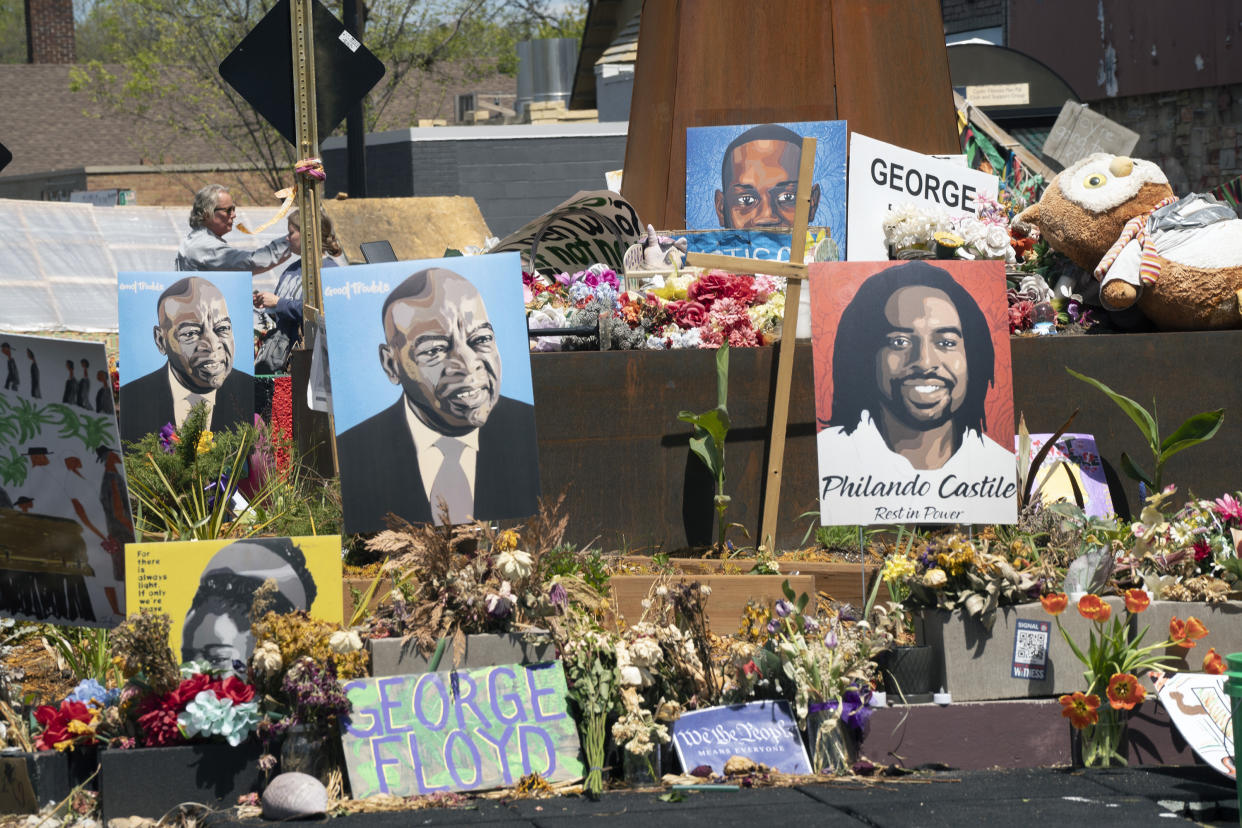
The square encompasses several blocks west and north of Cup Foods convenience store, where Floyd was accused of trying to pass a counterfeit $20 bill. It features a wide, circular patch of land dotted with flowers and artwork. A giant wooden fist, a symbol that has long represented Black power and pride, stands prominently in the center. Steps away there’s a now defunct Speedway gas station that’s been rebranded as “People’s Way.”
At first glance, George Floyd Square is a grander version of the impromptu memorials that often crop up in the wake of police-involved deaths across the country. While it’s common for mourners to reclaim the scenes of those deaths and fashion them into living shrines, the global resonance of Floyd’s death and the unorthodox nature of the square, which as of now remains an autonomous zone, sets this site apart. And those who help maintain it, live or work nearby, or attempt to govern the area are deeply invested in its somewhat undetermined future.
“There is no other place in the world like this,” Webb, who’s a general contractor by trade, told Yahoo News. “This is my hundred-year plan. A hundred years after I’m gone I want this still going.”

When the riots broke out after Floyd’s death last May, Webb, who is among many others who take it upon themselves to beautify the memorial — clearing out trash and dead flowers and anything deemed inappropriate that has been left there — said there was no leadership from the city about what to do with the site, so others stepped up. (Minneapolis Mayor Jacob Frey declined Yahoo News' request for comment for this article.)
Paul Eaves, a gardener who lives near the square, told Yahoo News that he first visited the site on a Thursday, three days after Floyd was killed. “By Friday [I thought], OK, this is a place I'm going to keep coming to,” Eaves said. “This is where my energy would serve the racial justice movement.”
Activists and caretakers seem to feel both an ownership of the space and a willingness to let visitors shape it however they see fit.
“Everything is an offering,” Eaves said, as he shepherded a Yahoo News reporter through the area. “We’re not trying to make this look how we want it to look. There’s a team of people, [a] preservation crew [and] some community people that work to restore any art, because it's all part of the story.”
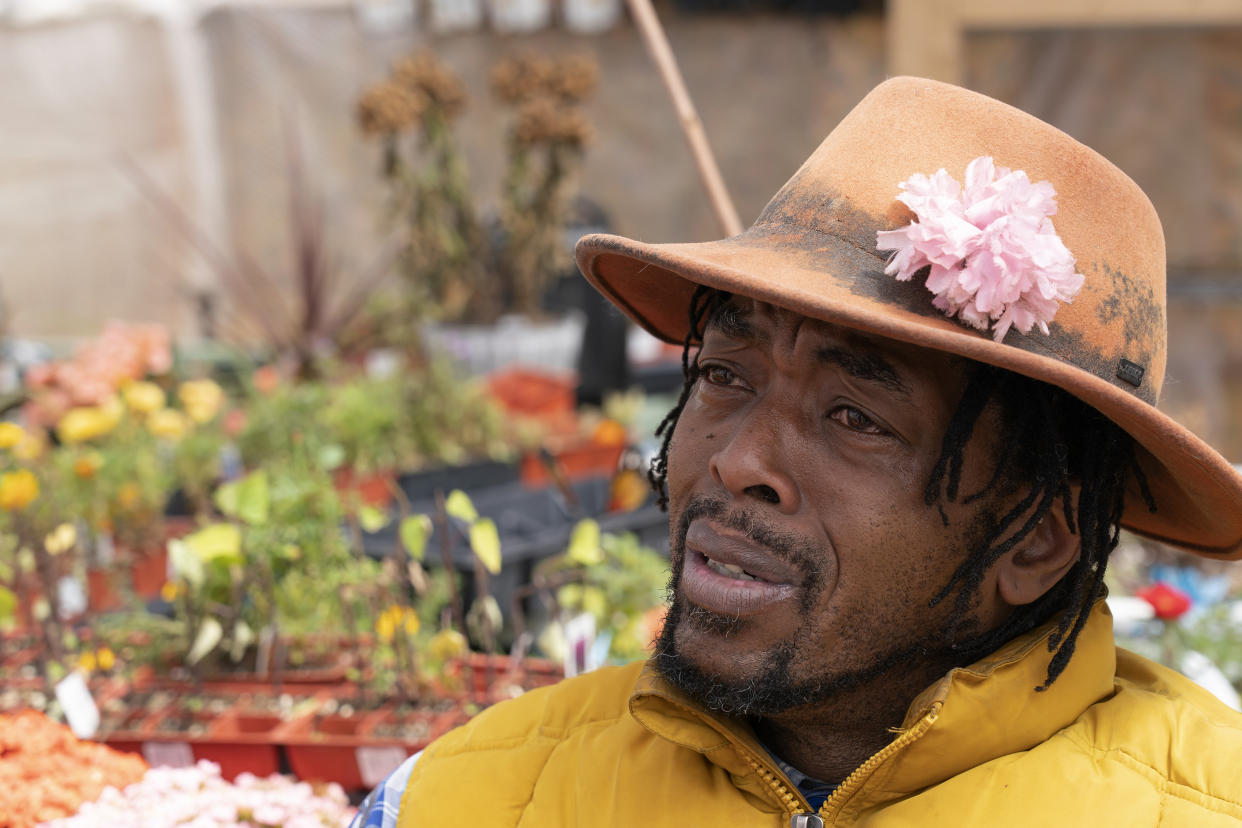
Standing at a nearby intersection, Jenkins is careful how she describes the beloved site, which she says reflects “two realities.”
“From its inception, it has always been this vibrant and beautiful site for community gathering. It has been the site of where protests either begin or end,” she told Yahoo News. “But over time, that vibrant community spirit that we see in the daytime is transformed at night into something different. Something that is less than safe, that breeds a criminal element.” Since May 25, 2020, Jenkins said, five people have been killed in the area that is home to the square. “There have been a number of shootings, muggings, robberies,” she said.
Jenkins said this stems, in part, from the aversion to law enforcement among those who frequent the site.
“Police [have] been consistently met with opposition, hostility, confrontation,” she said. “So unlawful behavior has an opportunity to flourish. People who commit crimes in other parts of the city come to George Floyd Square because they feel like there will be no opposition.”
Local news reports describing the area as a “no-go zone” — a term reportedly coined by some residents who believe law enforcement won’t enter the area — emerged as early as last July. One resident told the Minnesota Reformer at the time that police brushed off his call about shots being fired near his home about a block and a half away from the memorial.
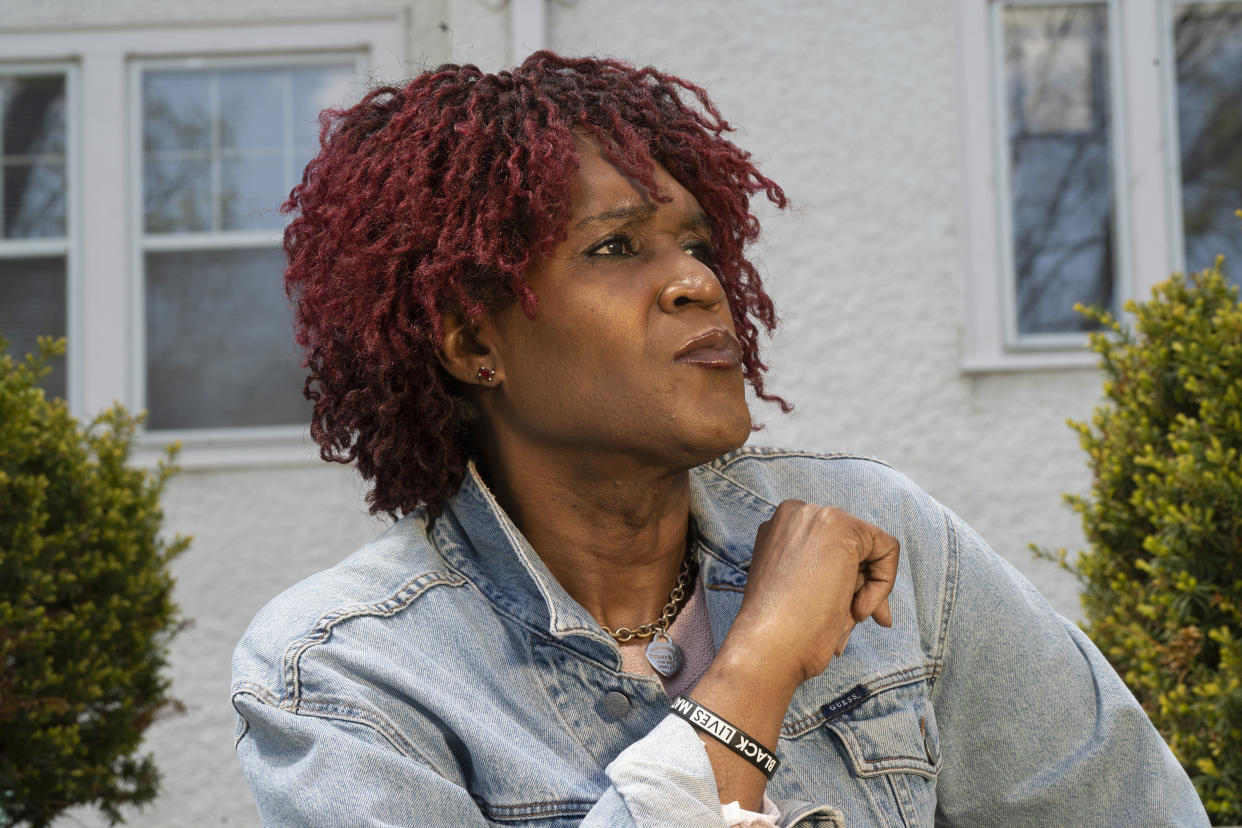
For its part, the Minneapolis Police Department rejected claims that police are actively avoiding the area or deliberately not responding to calls.
“The department patrols all areas of the city, bar none,” Officer John Elder, a spokesman for the department, told Yahoo News. “We patrol those areas. We do not shy away from those areas. There is hostility at times when we are present. But there are other areas in our city where there are people that are hostile towards police. It comes with the territory.”
One person who monitors the outskirts of the square and declined to be identified doesn't believe that George Floyd Square is any more crime-ridden than other areas.
“In my opinion, stuff happens less here,” the person told Yahoo News. “And it's safer because there's a community aspect here. People have their neighbors that they can turn to in a crisis; they don't have to turn to the police if something happens.”
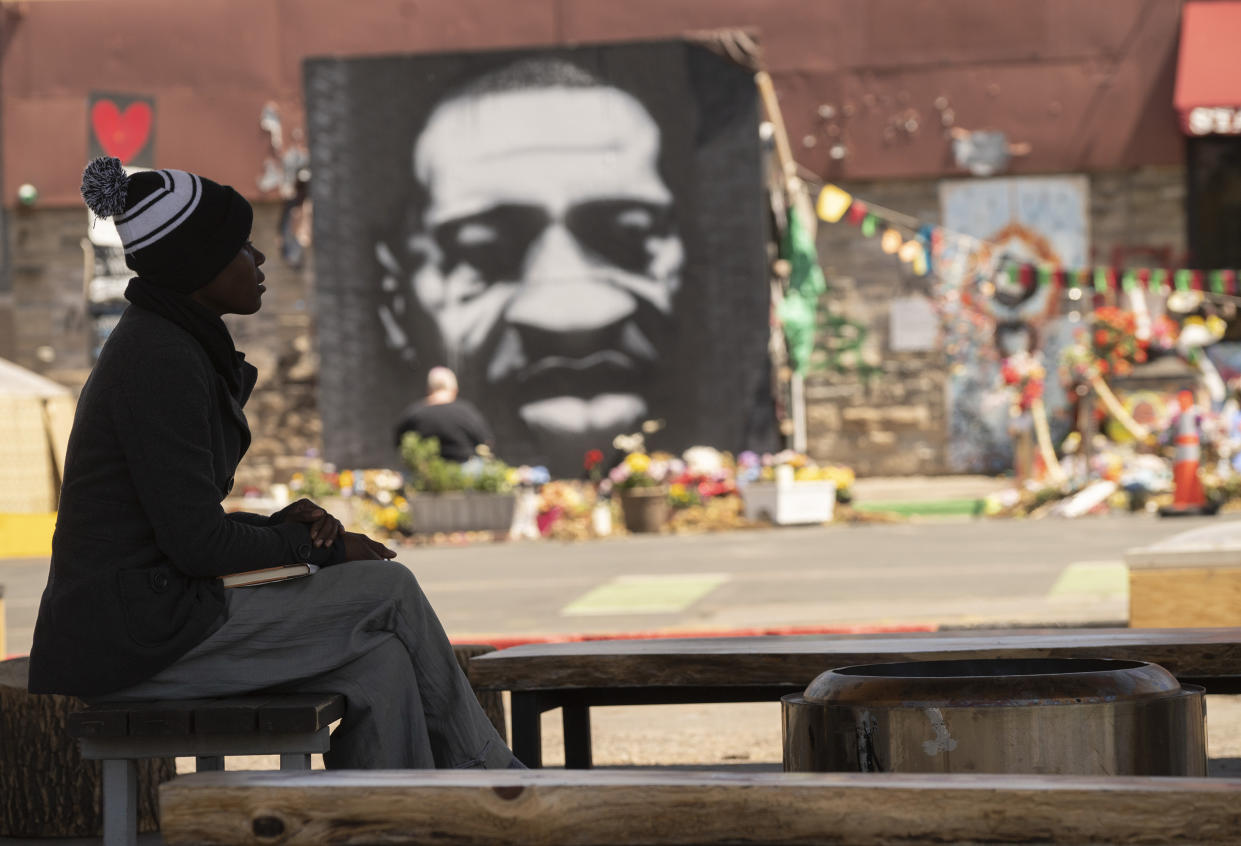
That perspective brings up a key question that looms over the future of the square: What, if any, plans does the city have for the area, whose many inhabitants have conflicting views on what should become of the intersection?
For some business owners, it’s simple: Reopen the intersection to traffic so more patrons can access their establishments.
“Every business in this intersection wants it back open,” Mike Abumayyaleh, the owner of Cup Foods, told Yahoo News, adding that the lack of steady traffic has affected business “big time.”
Jamar Nelson, a spokesman for the convenience store, said its business had also suffered because of its association with Floyd’s death.
“Cup Foods has taken a beating,” he said. “And I know some of it is because a lot of people blame them for this whole incident. But more people are afraid to come [to] the area.”
Out of reluctance to become drawn further into the controversy that has engulfed the neighborhood, few other local business owners in the area agreed to speak on record with Yahoo News. Nelson, however, revealed that he had been physically assaulted in the area last October.
“I had knee surgery,” he said. “I tore my ACL and my meniscus because of the assault. Businesses are totally complaining — Black, white, pink, purple, it doesn't matter. The owners are complaining that [their] businesses can’t [be sustained] if they don't have patrons frequenting their businesses because they're afraid to come in the area.”
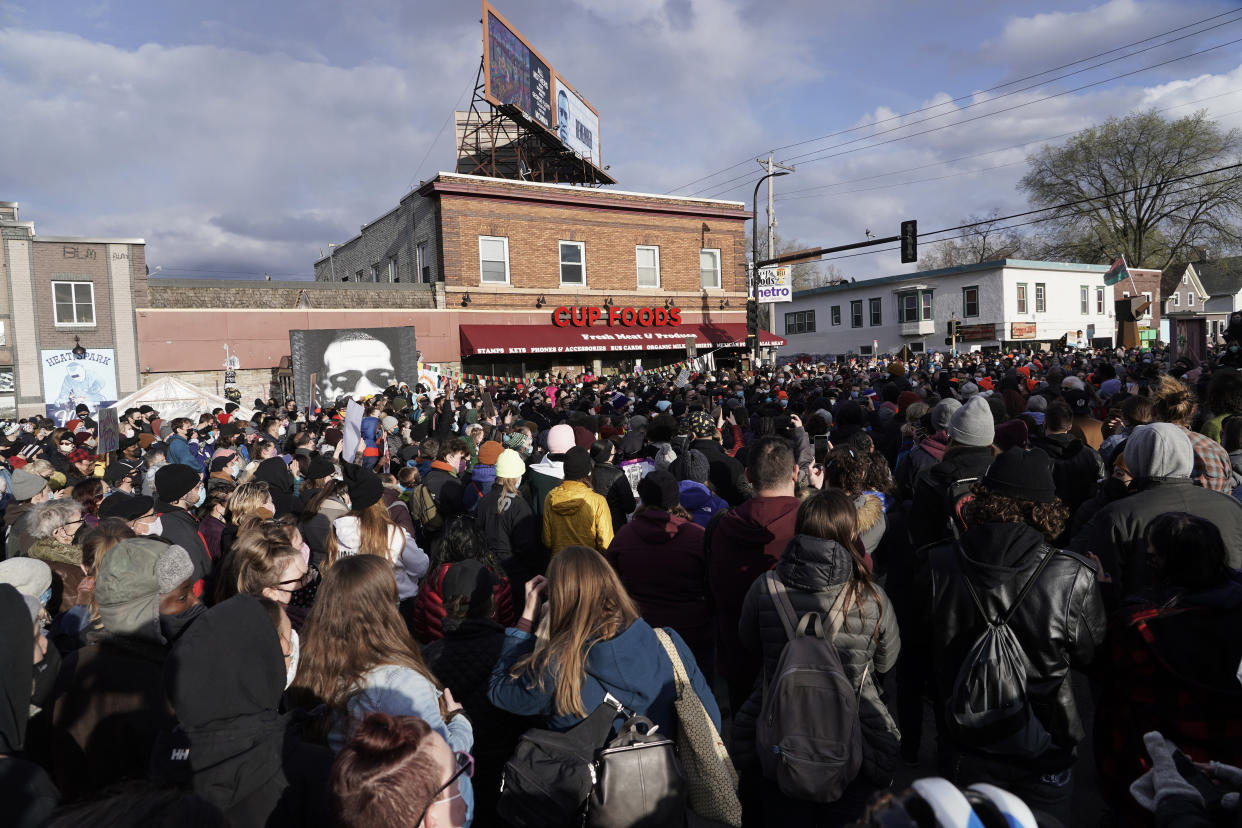
Cubtan Nur, who operates AXIS, an agency that provides personal care assistants, said the concrete barriers that ward off incoming traffic frighten prospective clients.
“I’m looking for places,” Nur told Yahoo News. “If it’s going to be like this forever, then I don’t want to be here.”
It’s a bit more complicated for the homeowners who’ve had a front-row seat to the demonstrations and riots, the swells of anger and relief that filled the space amid the ongoing court cases of the men charged in connection with Floyd’s death. Esther Cervantes told Yahoo News that she has become accustomed to explaining to curious visitors what it’s like to have a backyard view of the square.
“The question that I got all summer, from mostly white folks who were coming in from the suburbs, [was] ‘Oh, my goodness, how scary is it to live here?’” Cervantes said. “And I did what I could to disabuse them of that notion.”
Cervantes admitted that “the first couple of weeks” after Floyd’s death “were really rough” because it was unclear who the actual agitators were and who was causing the destruction. Uncertainty kept her family awake for weeks. “We didn’t know what was going to happen,” she said.
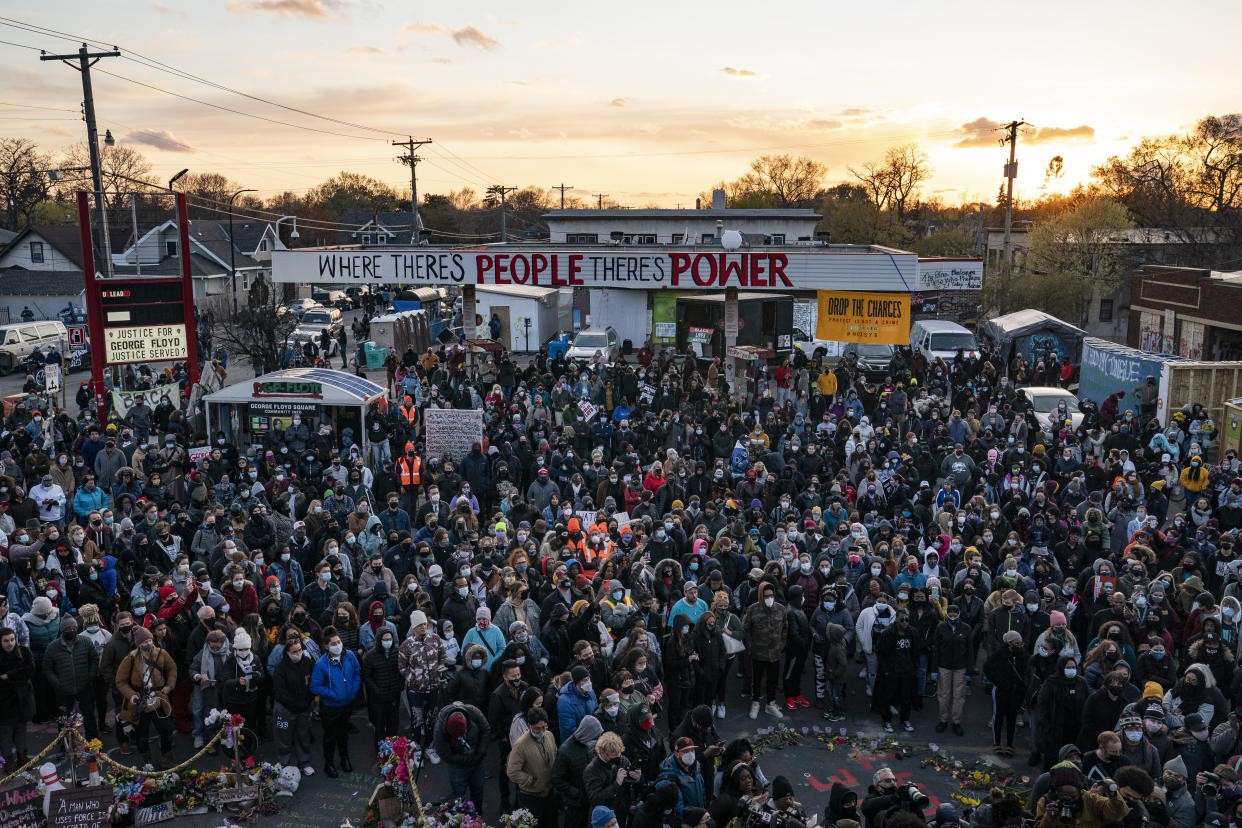
But after the chaos died down, Cervantes said, she observed joyful gatherings at the site and once again felt a sense of security. “I had a whole bunch of eyes on my block,” she said. “As [the] momentum died, and there are fewer eyes out there again, we're having problems with all sorts of emergency services not really wanting to come up.
“I don't think that there's anyone who lives on this block who doesn't feel frustrated [and] kind of abandoned by the city,” she said.
Cervantes noted that her neighbors have met at monthly block meetings to discuss how to reengage the city.
“If there is any kind of going back to normal, it's going to be a very slow process,” she said. “And I'm not sure that normal is what I really want, given that normal gave us this whole situation in the first place.”
Under the terms of a civil settlement reached in March between the city and Floyd’s family, Minneapolis agreed to spend $500,000 on improvements to the intersection at 38th Street and Chicago Avenue. But it’s unclear what those improvements will look like. (Representatives for Floyd’s family did not respond to a request for comment for this article.)
Jenkins envisions the square as a “mecca for social justice in this country.”
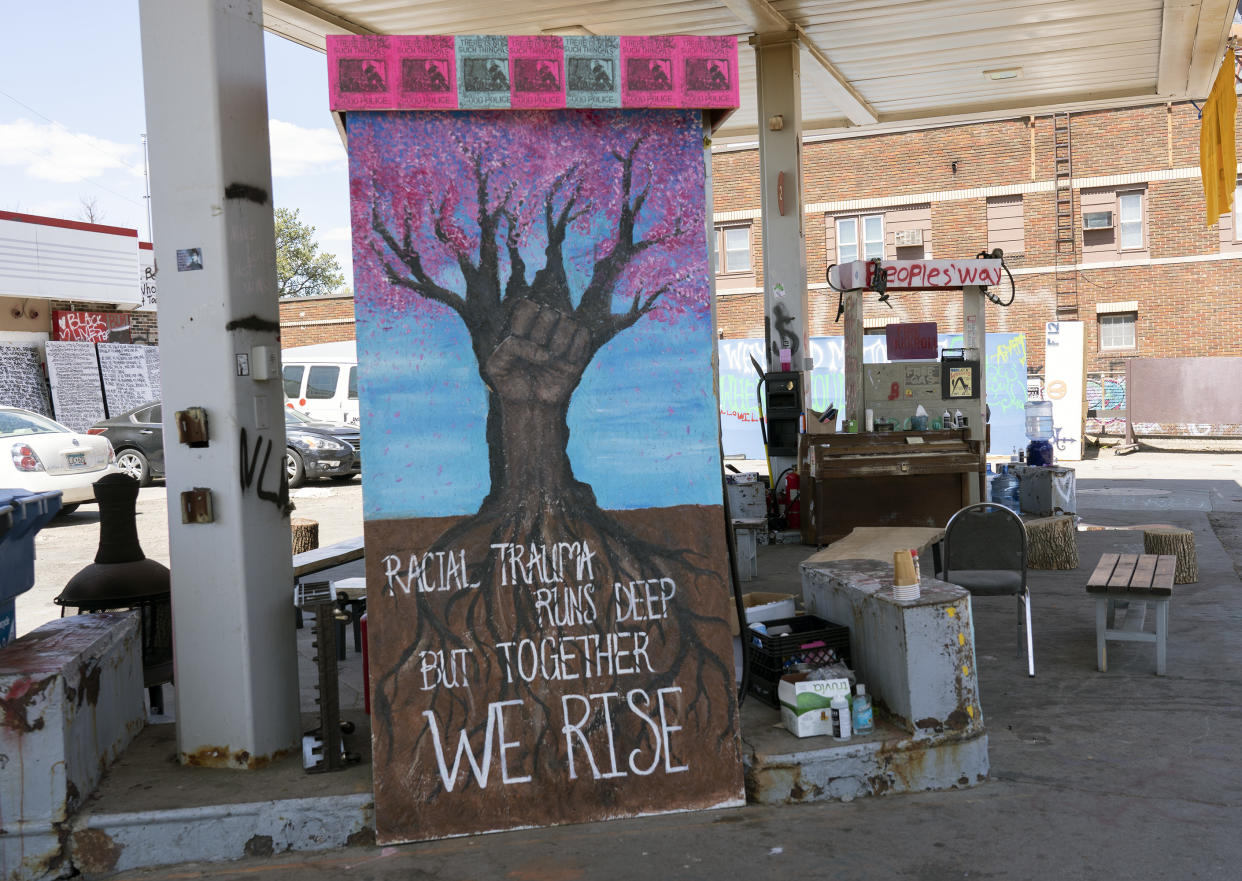
“The future of George Floyd Square does not have to be an either-or scenario,” Jenkins said. “I believe that George Floyd Square can be reconnected to the city and still be a place of sacred reflection [and] mourning. I've had a plan for the past three years to create a center for racial healing on 38th Street to really address the deep and systemic issues that plague our society.”
Jenkins’s vision isn’t too far off from that of the activists at the square, who harbor ideals both lofty and pragmatic for the space. At one of the entrances to the square sits a whiteboard with 24 demands, including one to keep the intersection closed until after the trial of all four officers charged in Floyd’s death and another to end qualified immunity for police. Another demand is for the city to invest $100,000 into the zone through neighborhood associations “to create jobs for young people, which will help deter violence.”
Mileesha Smith, an activist who’s known as Auntie around the square, says the space represents a struggle for a better quality of life for the city’s underserved residents, a cause that transcends its physical boundaries.
“[The] demands are a minimum of what we deserve,” she told Yahoo News. “We're not trying to take away, we just want more than what we have. And personally, I don't think that's asking for too much.”
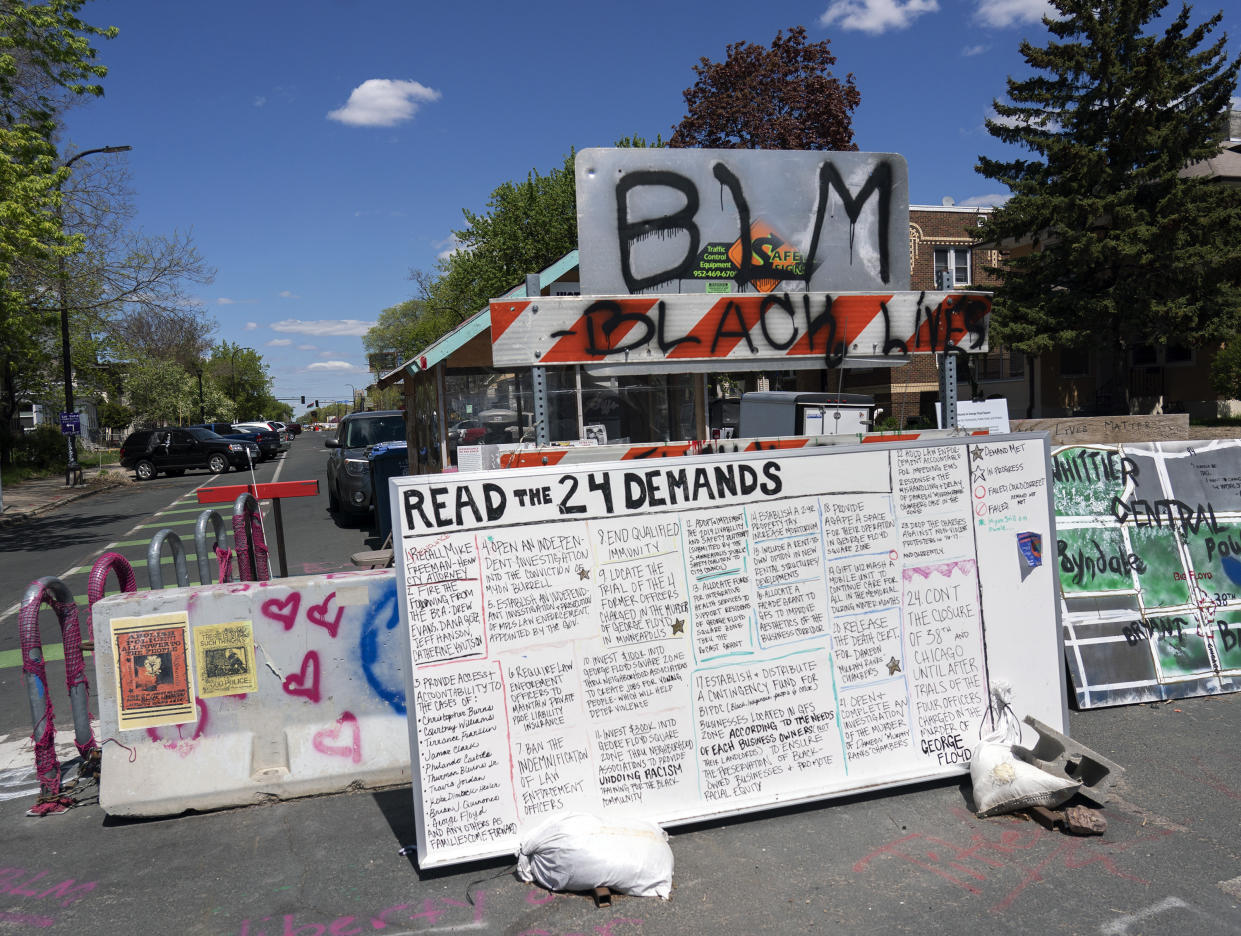
Smith takes pride in what the square has become in just one year. “We're standing up for ourselves,” she said. “We're doing for ourselves. Loving on one another. Sharing our resources with one another. We're feeding the people, clothing the people.
“It's not really the city that I'm waiting on anymore, just the people,” she said.
Thumbnail credit: Judy Griesedieck for Yahoo News
____
Read more from Yahoo News:


